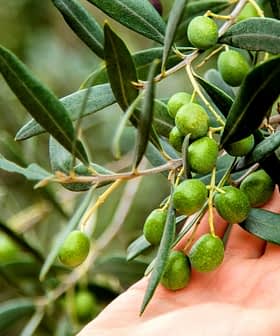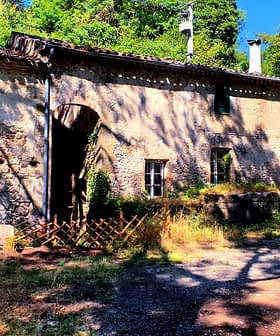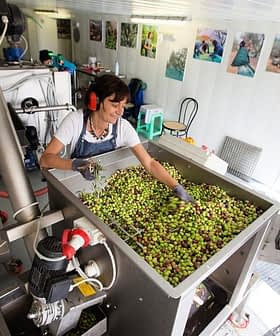Notes from Panisse: Early Harvest and 'Fruite Noir'
New York olive oil merchant Steven Jenkins asks his friend in Provence about late harvest oils.
My friend Bernard,
Why do so many French desire late harvest oil? Surely they know it has so little effect on food or how few polyphenols reside within late harvest olives — that without the high phenol count, the health benefit of olive oil is diminished?
Is it only because this is the type of olive oil they and their families were raised on?
I cannot understand why anyone who loves olive oil would opt for a sweet oil from black olives unless they don’t know the joys of early-harvest olive oil, that adult bitterness and spiciness that is absent from later harvests.
You said you have 8,500 trees? That’s a lot of trees!
– Steven Jenkins
Dear Steven,
Yes, 8,500 olive trees! Added to the 5,200 “AOC Provence” we have here around our old manor, it starts to mean something.
Antoine had his trees planted two and a half years ago and they are now 6 feet high! This crop was the first one (nearly 30 tons and a bit more than 5,000 liters) and it is very promising.
He chose the best varieties from Greece and Spain and we are anxious to see the result. We will test (and taste) the samples tomorrow, hopefully.
Antoine’s trees were something like 40 cm high to start with in May 2014. They all had a 3‑meter high wood support, tied to a metal wire taut from one end of the tree line to the other. This ensured that the wood supports were not affected and tilted by our strong Mistral wind!

He did a tremendous job, for he constantly tied the growing trees to the support as soon as they were 10 cm higher.
In doing this, there was little perturbation due to the wind, and the trees were kind of compelled to grow higher than thicker.
It should be emphasized that trees are planted every 1.5 meters, in lines, and that the harvest is done by a huge engine very similar to the ones used for grape harvesting.
Last year the trees yielded 1.4 tons, I wonder what we’ll get next year!
The nice thing is that those cultivars give small olives that the olive fly does not like for her eggs. This is why the olives were so nice and fresh as no heavy treatment against the flies is necessary.
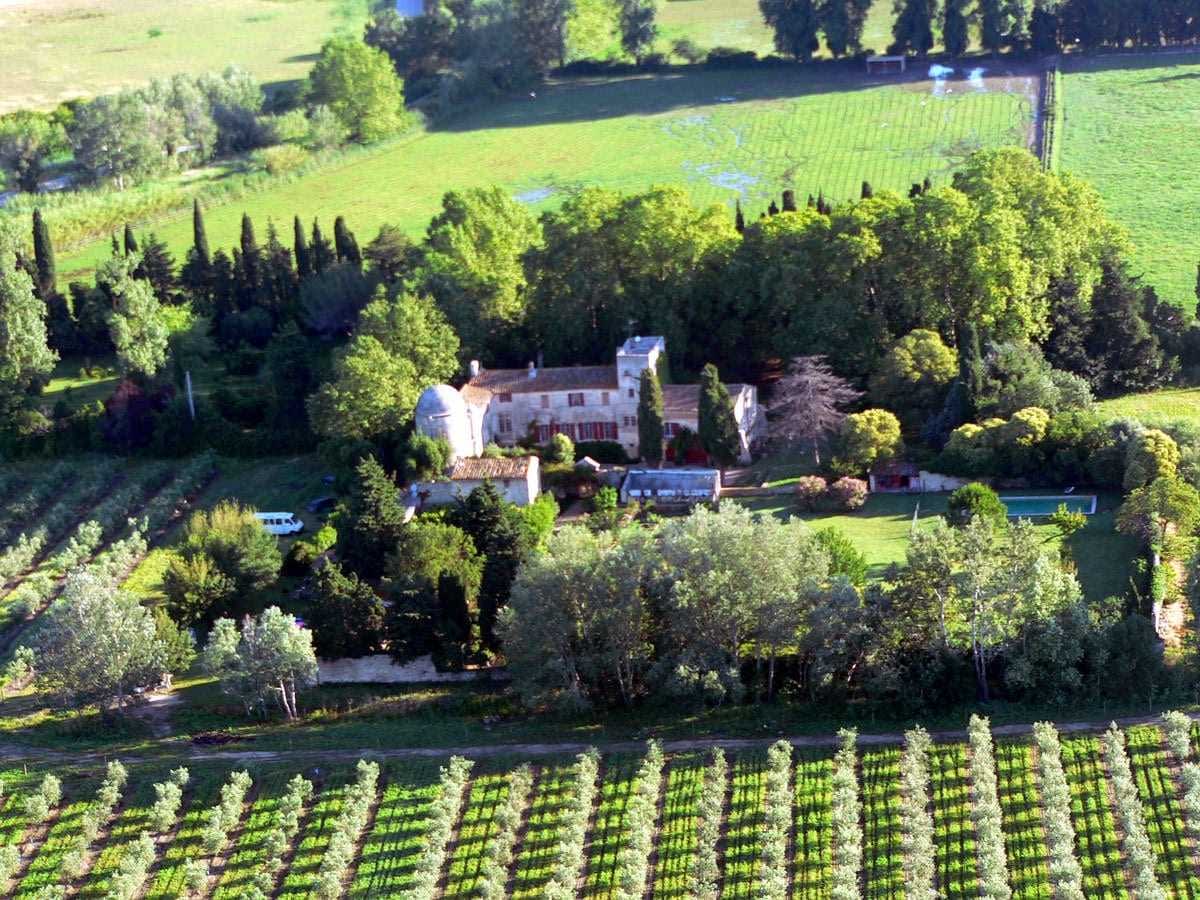
I’ll let you know our comment on this very new oil ASAP.
As for early harvest, I understand that it is not so long ago now that people realized how much better it is for taste as well as for health.
Those who nowadays promote late harvest from black olives, even sometimes after winter frost, are not so many and may be fewer and fewer. I think it is still the case in the surroundings of the city of Nyons, where you can find what is called Fruite Mur (Ripe Fruit). There are obviously people who like what they call a “soft” oil which, to me is, in fact, a flat olive oil.
As for our oils, They all are from an early harvest, and I can’t agree more concerning the importance low acidity level and high polyphenols.
But all this was not known by our parents and grandparents. All they knew is that the longer you wait for the harvest the more oil you get from the olives.

In doing so, you may get one liter of oil with every 4 kilos of olive (25 percent yield and higher). With green olives, you can get around 20 percent if you are lucky (this was the case with Antoine’s olives) or sometimes less than 10 percent if you are not (as for most people in France this year). We sometimes went down to 7 percent, only around Panisse!
Moreover, some decades ago, they were picking the olives by hand or with wood poles and they did not get huge quantities per day. I was told by an old guy that in the ’50s they were still filling large baskets with the olives and that those baskets were then stored in the dinning room for several days until the quantity was big enough to justify a cart to the mill!
He told me that the olives were then looking like a “compact cake” that you throw under the mill wheel.
Oxidation of the olives was certainly tremendous, and I can easily imagine that the acidity was high and the polyphenol level low.
At the time, the taste of olive oil was of course very different from a Fruite Vert. It is called today Gout a l’ancienne (taste of old days).
With a team of 12 people and 7 active “electric combs,” we in Panisse can get up to 3 tons on a good day. Anyway, our olives of the day are taken to the mill every evening and processed during the night.

A large number of people love the Gout a l’Ancienne taste wich is in fact what we get today with our Fruite Noir, also called Noir d’Olives. But the way it is made, away as far as possible of air oxygen, ensures a low acidity and a nice polyphenol level.
First of all, Noir d’olives is an early harvest made from green or purple olives about to turn black. Instead of being processed on the very night, the olives are put in large (1 cubic meter) hermetic containers, and placed in huge, temperature-controlled, rooms for around a week.
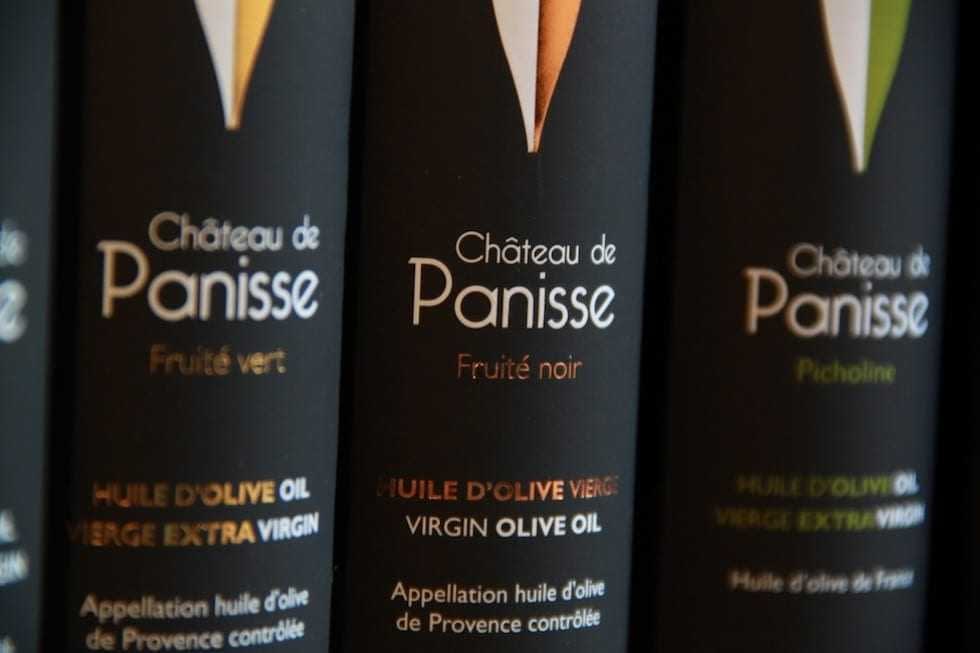
The temperature of the olives will rise to around 32°C and a fermentation will take place. After that, the olives are processed and it gives an olive oil with a stong taste of black olives, although made from green, or turning ones.
We have more and more customers for this Noir d’Olives that is excellent with goat cheese, on simple mashed potatoes (it gives kind of truffle taste) and in every kind of ratatouilles (cooked summer vegetables) or on fruits compotes.
It is also nice on fish out from the oven. On cold dishes, I personally prefer either the AOC or the Picholine.
I may have been a bit long, sorry for the English, I am a bit out of practice!
Chateu de Panisse
Petite route d’Arles
13150 Tarascon


